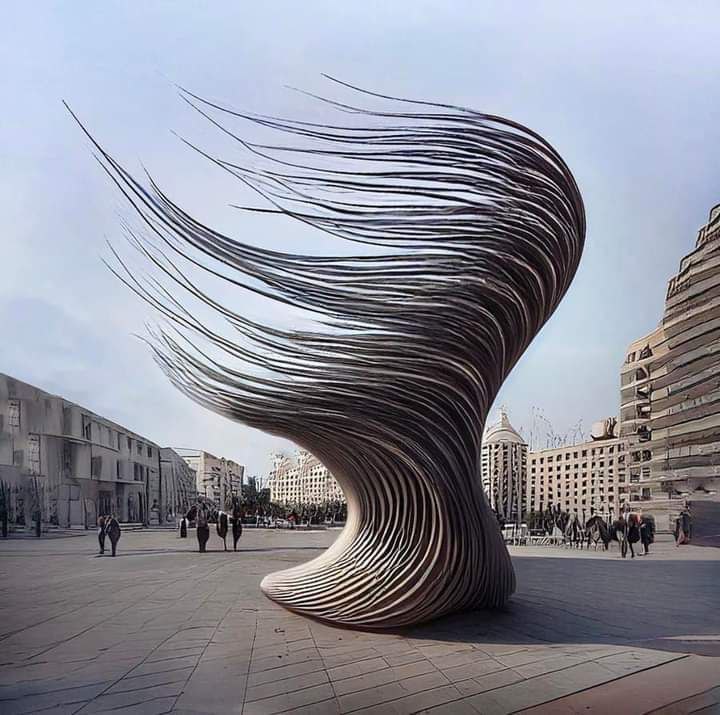Editorial for International Women’s Day from USA magazine Against the Current, journal of Solidarity US, “a socialist, feminist, anti-racist organization”
Women’s Rights, Human Rights
Afghanistan, Iran, Poland, El Salvador and Nicaragua. Texas, Alabama, Louisiana and Mississippi…
These are among the countries and states where ruling authorities take it upon themselves — in a variety of ways along a broad repressive spectrum — to curtail, suppress or outright nullify women’s rights if not their basic personhood. The ways and means of these attacks of course vary widely.
They range from legal and official discrimination, to gendered violence perpetrated with impunity, to rape as a weapon as in Russia’s invasion of Ukraine and the Ethiopian state’s war in Tigray, and more. What’s common to each and every case is that degrading women’s rights — along with those of queer and non-binary people — is central to reactionary forces’ assaults on all human rights.
As for the United States itself, where the battles over abortion and gender are inextricably part of the swirling unresolved political crisis and potential Constitutional meltdown, we’ll also look briefly here at some too little-covered facts of how U.S. policies impact the rights and lives of women outside this country’s borders.
In Iran, the regime is in open warfare against the population. The response to the murder of Mahsa (Jina) Amini has become an uprising against the entire apparatus of the “Islamic Republic.” Dictating what women choose to wear is basic to the drive for complete social control of what everyone, especially youth, are allowed to do or dream.
“Women. Life. Freedom!” is a women-led revolution that now engages the struggles of Iran’s youth, Kurdish people and strategic sectors of the working class.
Will it triumph? Right now there’s no way to know. What we can say, even though the murderous brutality of the Iranian theocracy and Revolutionary Guards knows no limits, is that Iran will not return to society’s former half-voluntary compliance with the dictatorship.
In Afghanistan, the most vicious elements of the Taliban — who exercise decisive veto power over the regime —seek to nullify the very personhood of women. Deprived of access to university and even high school education, barred from employment in public service or by international aid organizations, they are left dependent or destitute. Among the results this winter are threatened deaths by starvation or freezing of hundreds of thousands of Afghans whom assistance can no longer reach.
This heartbreak and disaster are fairly well-covered in mainstream media. What’s too easily forgotten, so all the more important to recall here, is that “liberation” of Afghan women served as a pretext for the U.S. and allied invasion following the 9/11 2001 attacks — after imperialist interventions and rivalries from the 1980s on had already brought Afghanistan to the edge of catastrophe.
The delusion of liberating women — or anyone else — in Afghanistan from above and from outside played no small part in the development of the present tragedy.
In Ukraine, not only are rape as well as mass murders of civilians committed by Russian invading forces. Vladimir Putin himself calls Moscow’s war a defence of “traditional values” against such perversions as queer rights and the mythical “dozens of genders” supposedly recognised in the West. Putin’s ultra-reactionary ravings are the natural accompaniment to the denial of Ukraine’s right to exist, with the genocidal implications of that doctrine. The invaders’ rape and massacre perpetrated against the people of Ukraine feed back into the savage escalation of the already intense repression of LGBT people within Russia.
Closer to Home
If the examples of Iran, Afghanistan and Russian atrocities in Ukraine are the most immediately visible cases of the extinction of women’s rights and the consequences, there are plenty of instances closer to our own situation. The point is not to identify the “worst” case — as such comparisons are essentially meaningless — but to examine some common features.
Take Poland, in the heart of Europe: Extreme restrictions on abortion access have been imposed by the right wing “Law and Justice” party in alliance with the Catholic church. These measures are accompanied — not coincidentally — by severe weakening of the power of the judiciary to limit anti-democratic legislative extremism. That’s also occurred in Hungary’s self-declared “illiberal democracy” and is now well underway in the Israeli state.
Two-thirds of Polish citizens support abortion rights – very similar to the percentage in the United States. Women-led protests have taken to the streets in large numbers in Warsaw and other cities and towns, but so far failed to overturn the government’s measures.
The full toll in women’s deaths and permanent injuries remains unknown. Since 2021 at least two women in publicised cases, Anieszka T. and Izabela Sajbor, died after abortion care was denied even though the foetuses were either unviable or already dead.
In Ireland, popular revulsion over the 2012 death of Savita Halappanavar, who was denied a medically essential abortion until it was too late, led to striking the anti-abortion provision from the country’s Constitution.
In Israel, tens of thousands are taking to the streets weekly against the ultra-racist governing coalition’s move to strip the powers of the Supreme Court. Women’s and queer rights are relatively well-entrenched in Israel — for Jewish citizens — and less likely to be immediately on the chopping block.
The first casualties in this case are the already-vanishing shreds of court protection for Palestinians in the occupied territories, and the (limited) civil rights of Arab citizens including their parties’ ability to run in Israeli elections (which the Supreme Court has reinstated by overruling bans imposed by parliamentary decrees). There are elements in the “religious Zionism” bloc, however, for whom gender and especially queer rights are blasphemy and ultimate targets for extinction under the “Jewish state.”
Central America is a particularly gruesome arena in the women’s health battleground. The new government of president Xiaomara Castro in Honduras promised to loosen the country’s deadly abortion ban, but hasn’t yet succeeded. The situations in Nicaragua and El Salvador are grim: When left wing governments were in power (the Sandinistas in 1980s Nicaragua, the FMLN party elected in El Salvador in the ’90s after the civil war), they failed to take anti-abortion laws off the books.
Nicaragua today is ruled by the right wing presidentialist dictatorship of Daniel Ortega (see “Repression Continues to Grow in Nicaragua” by William I. Robinson, ATC 222) and El Salvador by the reactionary government of Nayib Bukele. Women in El Salvador who suffer miscarriages are subject to prosecution and up to 30-year prison terms, provoking widespread outrage. Not coincidentally, under this repressive regime, water protectors are also being prosecuted (see page 2 of this issue).
The Not-“100% American” Scene
In our own partially democratic country called the United States of America, a woman’s right to control her own body is constrained legally by the state she lives in, practically by her county of residence — where abortion care may be unavailable even if legal — and financially by her capacity to travel if she needs to gain access beyond state lines.
The long, instructive and often heroic struggle for abortion rights and expanded other essential rights and services — against racist sterilization abuse, for adequate paid parental leave and free quality childcare, for birth control and sex education — is discussed by Dianne Feeley in this issue of Against the Current. Much of that feminist liberation agenda remains unfulfilled, of course, especially in the era of neoliberal “free market” dogma, falling real wages and stagnant living standards, and capital’s assault on labour rights and unions.
Following the Supreme Court Dobbs ruling, the right wing aims to hurl women back to the age when unwanted pregnancy, or a pregnancy with complications, meant terror. Where they control state governments, attempts to criminalise medical (pharmaceutical) abortion, out-of-state travel for abortion access, even contraception, are on their agenda — along with ever more vicious assaults on trans youth, banning books and education on Black history and U.S. racism, and other malicious mischief.
What often gets less attention than it deserves is the international impact of the United States’ reproductive rights battleground. “A half-century-old U.S. law is stripping women of rights they are legally entitled to in their home countries,” writes Anu Kumar (“Why is America Preventing Legal Abortions in Ethiopia?” The New York Times, 10/23/22)
The reason is a particularly vicious 1973 post-Roe backlash legislation known as the (Senator Jesse) Helms Amendment, appropriately carrying the name of its sponsor, one of the most racist as well as misogynist politicians in our recent history. It prohibits U.S. foreign aid funding for “abortions as a method of family planning.”
Under a restrictive interpretation that goes beyond even the language of the amendment, Kumar explains, the law “instead incorrectly has been applied as an outright ban on all abortions.” It has also been interpreted to mean that clinics receiving U.S. funding cannot even mention abortion. And even though only U.S. funding is directly affected, in many poor and rural regions “the complication of securing other funding that could be used for abortions is too difficult, which means the entire health facility simply does not offer abortions at all.”
The heavy hand of these restrictions is felt all the more strongly because U.S. funding of family planning overseas amounts to 40-50% of the global total. In Ethiopia, Anu Kumar reports, her organization IPAS (Partners for Reproductive Justice) states that “the United States funded about 30 percent of total family planning foreign aid in Ethiopia from 2018 to 2020, but that funding is spread among more than 45 percent of health facilities in the country.”
Such is the case for example at the Shekebedo Health Centre in southwestern Ethiopia, a country where abortion is legal. The Centre’s partial funding by the U.S. Agency for International Development “has stopped the clinic from offering abortions to Ethiopian women.”
The global harm is enormous, says Kumar: “In countries that accept U.S. family planning aid and where abortion is legal under some circumstances, more than 19 million unsafe abortions occur annually — more than half of the global total” (emphasis added) — resulting in complications including deadly ones like sepsis that claim some 16,000 women’s and girls’ lives annually.
The alternation of U.S. presidential administrations, with Republicans applying more restrictive and Democrats more liberal directives, makes it even more difficult to implement coherent policies.
This is blood on the hands of the U.S. Congress, the grotesquely mislabelled “pro-life” movement, and the executive branch, including president Biden, who at least “could issue federal guidelines to clarify that Helms permits U.S. funds for abortion care in cases of rape, incest and life endangerment” and “ensure that clinics in countries where abortion is legal understand that U.S. rules allow them to offer abortion information and counselling.”
To see what difference a sane and decent policy could produce, consider the case of Benin, an African nation where the number of botched abortions declined after access to abortions was broadened (Elian Peltier, The New York Times, 11/13/22).
While most countries in Africa restrict or ban abortion — South Africa, Mozambique, Cape Verde and Tunisia being among the exceptions — the tide there is slowly turning toward abortion rights, despite fears that the overturn of Roe in the United States may hold it back.
It’s important to say here that the very real authoritarian menace globally and in the United States, with all the murderous attacks on women’s lives, LGBTQ people and (especially in dozens of U.S. state legislatures) transgender young people, is only one side of the picture. Victories are being won, whether large (as in Ireland, Mexico, etc.) or more modest as in U.S. state ballot referenda.
Most important of all is that everywhere, the fight is on — women along with queer and trans people will not quietly accept oppressors’ and cynical politicians’ denial of their humanity, dignity, agency and rights. The movements are decisive: When the targets of oppression stand up for themselves, they attract allies and solidarity, and their struggles cannot be pushed back into isolation, silence and shame — as so many generations of women have suffered undergoing forced birth or deadly illegal abortions.
The lesson everywhere is that women’s rights, gender and trans rights, queer rights are human rights. They rise or fall together. In a world of rising authoritarian rule and right wing menace, “Women. Life. Freedom!” means all of us.
Source: Editorial March-April 2023, ATC 223 https://againstthecurrent.org/atc223/womens-rights-human-rights/




